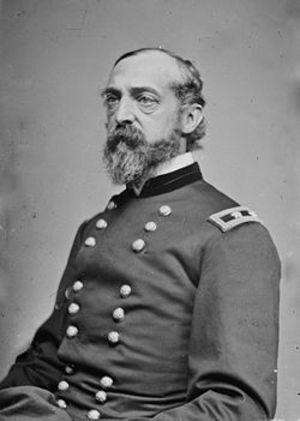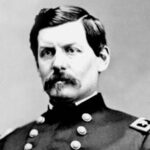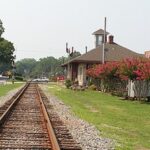The Battle of Kennesaw Mountain was one of the major battles during the Atlanta campaign, during the Civil War. The battle took place on June 27, 1864, and was a tactical victory for the Confederate Army. The Union casualties were approximately 3,000, compared to the Confederate loses of approximately 1,000. In the battle, the Northern Army was commanded by General William T. Sherman. The Confederate Army was under the command of General Joseph E. Johnston. [1] This battle was one that was fought with incredible intensity on both sides, as there were a total of 4,000 casualties in just a single day. As a result of a tactical mistake by Sherman, and defensive preparation by Johnston, the Confederate Army was able to take put a dent into the overwhelming number of Union soldiers that were making a push for control of the city of Atlanta.
Throughout various battles in the campaign for Atlanta, Sherman attempted to outflank Johnston, but he was always denied. Johnston was considered to be somewhat of defensive strategic genius. Throughout various points in the campaign, Johnston would completely frustrate Sherman and his forces, despite the fact that Sherman had close to double the amount of troops that Sherman had. [2] One thing that Johnston had working in his favor was the fact that he had the all important high-ground. Earlier in the campaign, in an effort to outflank the Confederates, Sherman decided to have some of his troops go to Snake Creek, in an effort to outflank Johnston, led by General McPherson. Johnston was able to escape with his men via railroad, without significant casualties. This was yet another instance where Sherman had had just about enough. Leading up to the battle at Kennesaw, Sherman was getting desperate. He knew that he needed to secure Atlanta as quickly as possible, and with every passing day, the 1864 election was coming closer and closer. President Lincoln needed the war to be won by that point, or he would lose the election, and the war would be ended by his opponent, George McClellan from New York. Truly, there was an enormous amount of pressure on Sherman to get the job done and take Atlanta with great haste.
Johnston’s troops were set up in a large, semi-circle like formation in the mountains. Sherman felt that if he was able to break through the center of Johnston’s formation, the entire Tennessee army would fall and the Union army would be able to take Atlanta. But in order to accomplish this, Sherman would have to create a few diversions. First, he would send troops to attack on both ends of the Confederate line, in an attempt to draw as many Confederate troops away from the center as possible. Next, he would attack two key points in the center of the formation with significant force, in an effort to break through the Confederate lines completely. This plan did not work as Sherman had hoped it would. Johnston’s forces were able to thwart the attacks on their end lines without significant difficulty. One thing that was working against the Union troops on both the outsides and in the center was the difficult terrain that they were in. This was due in large part to the fact that they were essentially climbing up hills and mountains while trying to withstand heavy fire from Confederate forces. In the end, Sherman lost 3,000 troops in one day, and Johnston frustrated him yet again. [3]
In short, Sherman and the Union forces lost because of the overwhelming sense of pressure that he was feeling both from the frustration that Johnston was causing him, as well as the strict timetable he knew he was on with regards to President Lincoln’s bid at re-election. Sherman was not patient enough to continue to try and outflank his opponent; instead, he decided that a full frontal attack was the best available option. While we will never know for sure, it would appear as though he was incorrect. The death toll could have been much worse on that day, had the other generals with Sherman not talked him out of trying to attack the center of the Confederates’ formation, later in the day. Despite Sherman’s misstep here, the Union forces were eventually able to win the Civil War before the deadline of the 1864 Presidential Election. President Lincoln was in turn, re-elected.
[1] Fowler, John D. Battle of Kennesaw Mountain. 2005. October 1, 2009. http://www.georgiaencyclopedia.org/nge/Article.jsp?id=h-3115
[2] Fowler, John D. Battle of Kennesaw Mountain. 2005. October 1, 2009. http://www.georgiaencyclopedia.org/nge/Article.jsp?id=h-3115
[3] Fowler, John D. Battle of Kennesaw Mountain. 2005. October 1, 2009. http://www.georgiaencyclopedia.org/nge/Article.jsp?id=h-3115



